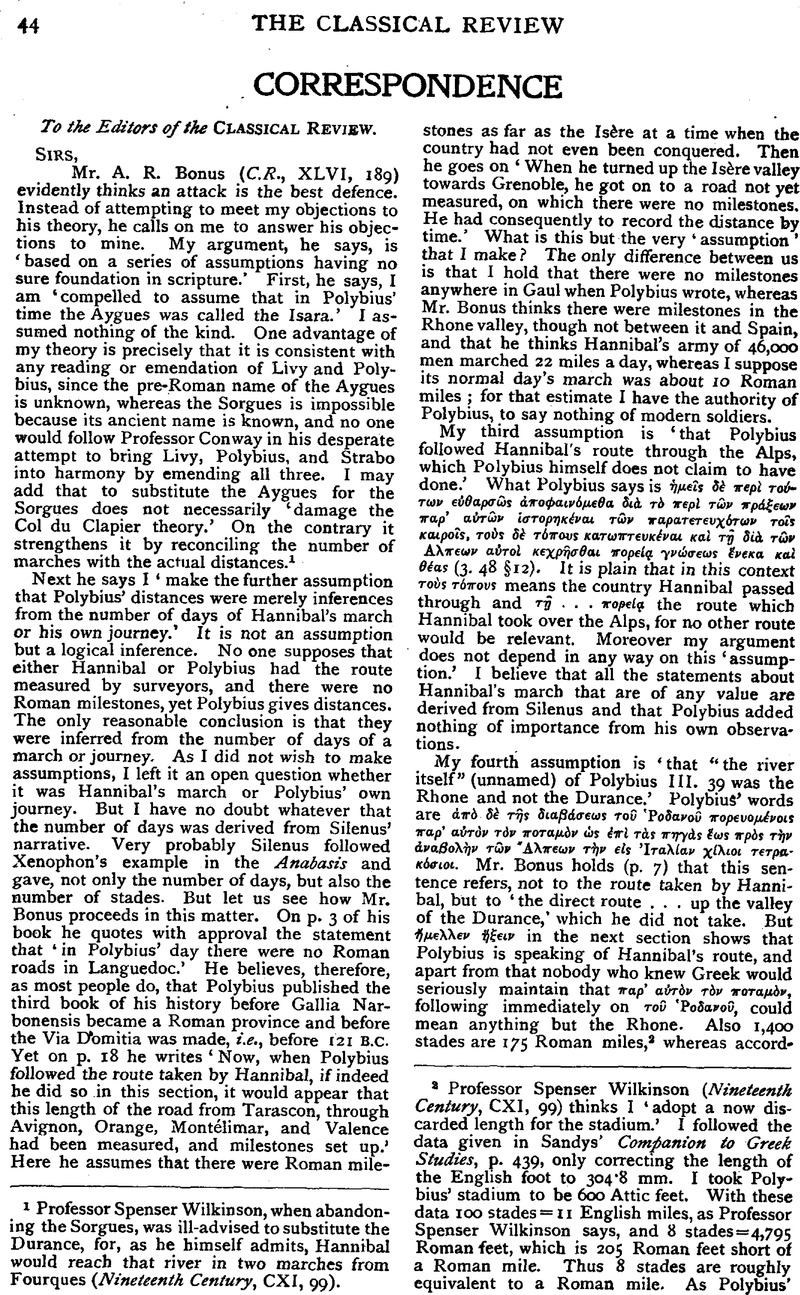
1 ProfEssor Spenser Wilkinson, when abandoning the Sorgues, was ill-advised to substitute the Durance, for, as he himself admits, Hannibal would reach that river in two marches from Fourques (Nineteenth Century, CXI, 99).
2 Professor Spenser Wilkinson, (Nineteenth Century, CXI, 99Google Scholar) thinks I ‘ adopt a now discarded length for the stadium.’ I followed the data given in Sandys' Companion to Greek Studies, p. 439, only correcting the length of the English foot to 304%8 mm.I took Polybius' stadium to be 600 Attic feet. With these data 100 stades = 11 English miles, as Professor Spenser Wilkinson says, and 8 stades = 4,795 Roman feet, which is 205 Roman feet short of a Roman mile. Thus 8 stades are roughly equivalent to a Roman mile. As Polybius' distances are merely inferences from the number of days, it is unnecessary to be more exact. But why, after reckoning 600 stades as about 66 Englishmiles, I made 800 stades nearly 92, I cannot say. I should have said 88.